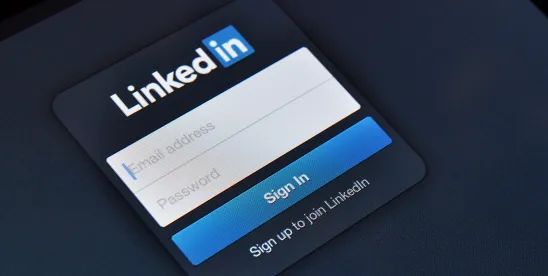If you’re new to LinkedIn and unsure where to start, don’t worry! Setting up your LinkedIn profile, building your network and making the most of the platform can feel overwhelming, but with a few simple steps, you can get on the right track and soon. Here’s a guide to help you build a strong LinkedIn presence from scratch.
Why LinkedIn Matters: LinkedIn has evolved into so more than just a place to find jobs. It’s a platform for building your professional network, engaging with your clients and prospects, building your brand, sharing your expertise and connecting with industry leaders. Whether you’re looking to advance your career, expand your business or simply stay informed about industry trends, LinkedIn offers many opportunities for you to do so.
Step 1: Setting Up Your Profile
- Create a Professional Profile Picture: Your profile picture is the first thing people see. Use a high-quality photo where you look approachable (please smile!). A good rule of thumb is to dress as you would for a job interview in your industry.
- Write a Compelling Headline: Your LinkedIn headline plays a key role in your professional visibility because it is included in both Google and LinkedIn searches. This high visibility makes your headline a powerful tool for capturing attention, showcasing your expertise, and making a strong impression on potential connections, clients and employers. Your headline should capture who you are and what you do. Instead of just listing your job title, think about what makes you unique. For example, “Marketing Specialist Helping Brands Grow” is more engaging than “Marketing Specialist.”
- Optimize Your Cover Image: Your LinkedIn cover image should be professional and aligned with your personal brand. Include your contact information and your firm’s logo. This provides a quick way for people to reach out and adds a cohesive look to all employee profiles.
- Craft a Strong Summary: Your summary is your elevator pitch. It should provide a brief overview of your professional background, key skills and career goals (written in the first person). Use this space to highlight what you do, why you do it and what sets you apart from your peers and competitors.
- Detail Your Experience: List your current and past positions with brief descriptions of your roles and achievements. Focus on outcomes and projects to show what you have accomplished but don’t get too detailed.
- Showcase Your Skills: Add relevant skills to your profile. Think about what skills are most valued in your industry and make sure they are included. Your connections can endorse these skills too.
- Include Education and Certifications: Add your educational background and any relevant certifications. This helps build your credibility and shows your commitment to professional growth.
Step 2: Building Your Network
- Connect with People You Know: Start by connecting with colleagues, classmates and other professional contacts. Personalize your connection requests with a brief message to remind them of how you know each other or why you’re reaching out.
- Join Industry Groups: LinkedIn groups can be a useful way to connect with professionals in your field depending on the activity levels of participants in the group. Look for groups with high numbers of followers in your industry and participate in discussions (it’s a great place to share information about an article you wrote or a webinar or event you are hosting) to start building relationships and visibility.
- Follow Influencers and Companies: Follow industry leaders, influencers and companies that interest you. This keeps your feed filled with relevant content and helps you stay informed about industry trends. Also, actively liking and commenting on their posts not only demonstrates your engagement but also increases your visibility and credibility allowing you to build valuable relationships and expand your professional network.
- Engage with Your Network: Don’t just connect and forget. Like, comment on and share posts from your connections. Engaging with content helps keep you visible and builds stronger relationships.
Step 3: Sharing Content
- Post Regularly: Share articles, updates and insights related to your industry. Regular posting keeps you visible to your network and positions you as an active member of the professional community.
- Share Your Achievements: Whether it’s completing a big project, receiving an award or finishing a certification, sharing these milestones can inspire others and highlight your capabilities.
- Write Articles: LinkedIn allows you to publish long-form articles. This is a great way to share your expertise on a topic and establish yourself as a thought leader in your field.
- Tag People: Tag relevant people and companies in your posts to encourage engagement and start conversations.
- Ask Questions: Post questions to your network to encourage interaction and gather insights.
- Use Visuals: Posts with images, videos or infographics tend to get more engagement. Use visuals to make your posts more attractive and engaging.
- Engage with Others’ Content: Comment on and share posts from your network. This not only helps build relationships but also increases your visibility to a broader audience.
Step 4: Utilizing LinkedIn Features
- Utilize the Featured Section: Leverage the Featured section on your profile to showcase your most impactful work. Highlight key articles, notable posts, presentations and media appearances that demonstrate your expertise and accomplishments. This strategically positions your top achievements at the forefront of your profile, making a powerful first impression on visitors and significantly enhancing your professional credibility and visibility.
- Leverage LinkedIn Learning: LinkedIn Learning offers a wide range of courses to help you develop new skills. Take advantage of this resource to stay current with industry trends, improve your professional expertise, and earn certifications that can be added to your profile. Regularly updating your skills and showcasing your commitment to continuous learning can enhance your profile’s attractiveness to potential employers and clients, demonstrating that you are proactive and dedicated to personal and professional growth. Also, sharing what you’ve learned through posts or articles can further establish you as a knowledgeable and engaged professional in your field.
- Use the Jobs Section: Even if you’re not actively looking for a job, the jobs section can help you stay informed about what skills and experiences are in demand in your industry. You can also set up job alerts for positions that interest you.
- Request Recommendations: Recommendations from colleagues, clients and mentors can add value to your profile. Strategically ask a few former colleagues, bosses and/or consulting colleagues for recommendations about your skills and experience.
- Explore LinkedIn Analytics: Once you start posting regularly, use LinkedIn’s analytics to see how your posts are performing. This can help you understand what type of content resonates with your audience and refine your strategy accordingly.
Step 5: Best Practices for LinkedIn Engagement
- Be Authentic: Authenticity goes a long way on LinkedIn. Share your thoughts, experiences and insights. People appreciate genuine voices and are more likely to engage with you if you’re being yourself. Bonus points if you share photos and videos of yourself!
- Provide Value: Always aim to provide value with your posts and comments. Whether it’s sharing a useful article, offering advice or providing feedback, valuable contributions help build your reputation.
- Stay Professional: Remember that LinkedIn is a professional platform. Keep your posts and interactions professional and respectful. Avoid controversial topics unless they are directly relevant to your industry.
- Network Consistently: Networking isn’t just a one-time activity. Make it a habit to regularly connect with new people, engage with your network and stay active on the platform.
- Keep Learning: LinkedIn is constantly evolving and so should you! Keep exploring new features, learning from others and adapting your strategy to make the most of the platform.
Getting started on LinkedIn doesn’t have to be overwhelming. By following these steps, you can build a strong profile, grow your network and start leveraging the platform to achieve your professional goals. Whether you’re looking to advance your career, build your brand and/or your network or simply stay informed, LinkedIn is a powerful tool that can help you get there.




 />i
/>i
